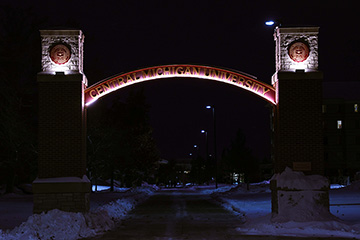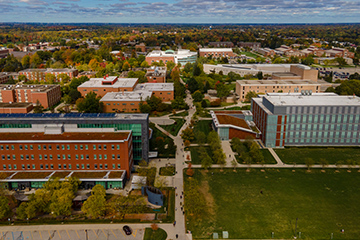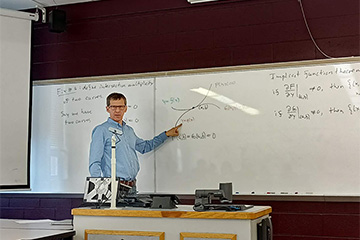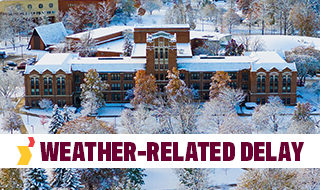Helping Michigan communities plan for climate change
CMU researchers to build local rain models for much of Lower Peninsula
Central Michigan University faculty members will use a federal grant to work with local communities developing plans to prepare for climate change-driven floods.
One of the first parts is using the powerful computing potential of the United States Department of Energy to build a new tool: precipitation models that could help local planners know how to protect critical pieces of their communities.
Wendy Robertson, Daria Kluver, John Allen and Rod Lammers, all from the College of Science and Engineering, received $1 million from the U.S. Department of Energy to work with community leaders in three Michigan watersheds.
Those watersheds are the Detroit-area Rouge River watershed, the Lower Grand River watershed near Grand Rapids and Isabella County’s Chippewa River watershed.
They also represent different kinds of land use, from urban Detroit to mostly rural Isabella County. That will create unique challenges depending on local priorities, offering CMU’s team a unique opportunity to collaborate with local leaders.
CMU’s researchers plan to solicit input to help identify vital community assets potentially at flood risk. Those assets could be anything from a field of high-value crops to roads necessary for First Responders, said Robertson, a hydrology expert with the Department of Earth and Atmospheric Sciences.
At the same time, they’ll run models to determine what future precipitation patterns could look like for a range of carbon emissions scenarios, said Kluver, a climate scientist with the earth and atmospheric sciences department.
Lammers, an environmental engineer with the School of Engineering and Technology, plans to take those precipitation models and determine where the water will go.
They’ll use that data to craft scenarios for local leaders to help them make plans based on changing risks, Robertson said.
The county-level climate change models are unique in a couple of ways and could help solve an open question among scientists.
They are among the first regional climate models to include a realistic representation of how the Great Lakes influence Michigan’s weather patterns Robertson said.
Current models don’t go deeper than the state level. The new models can include real-world weather processes like wind patterns or lake-effect precipitation. It’s more in-depth information, but also more resource intensive.
The question is whether this kind of model will produce results accurate enough to justify the added expense.




